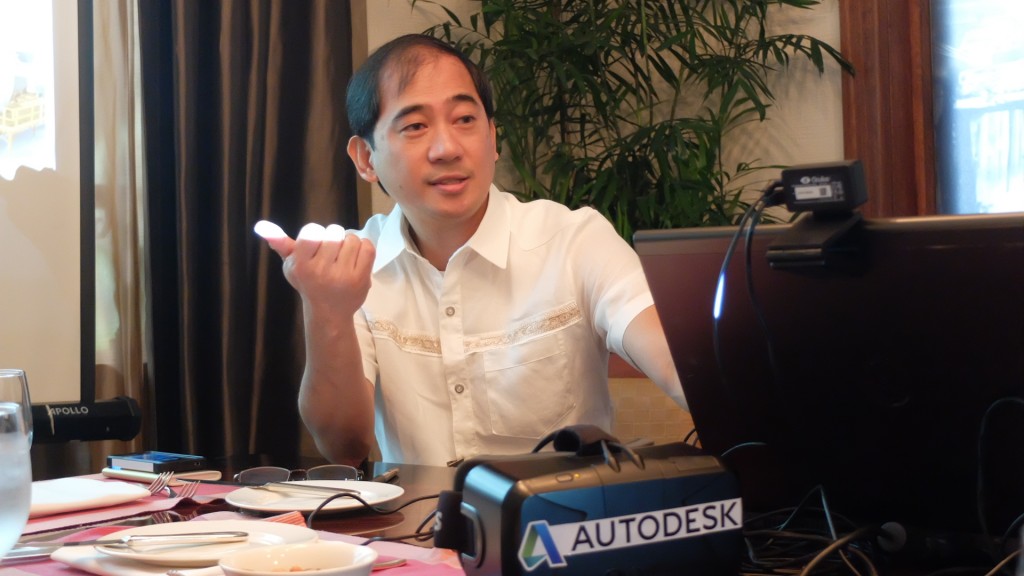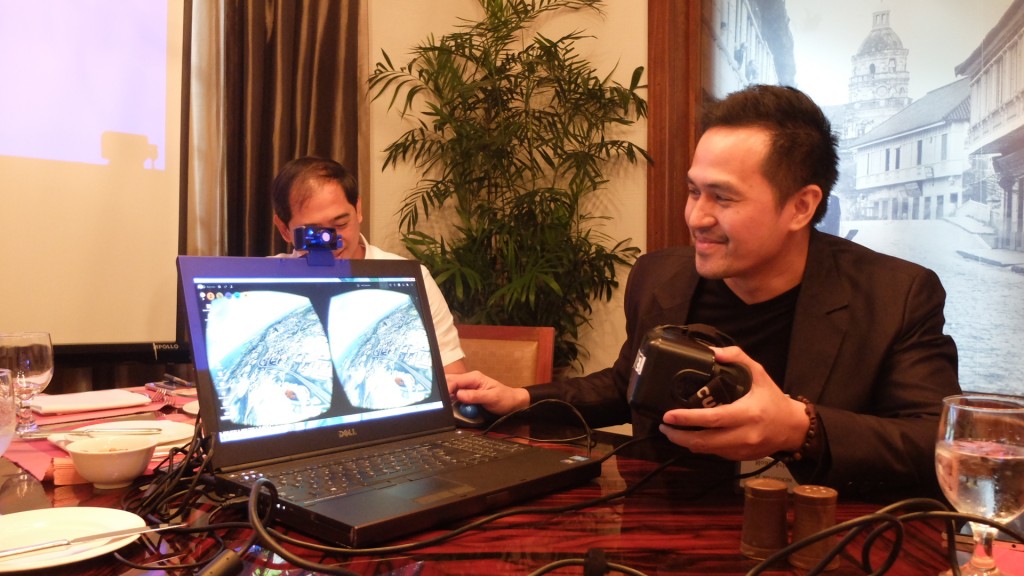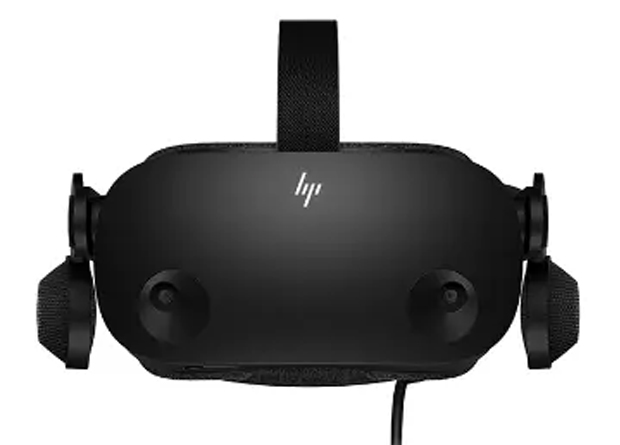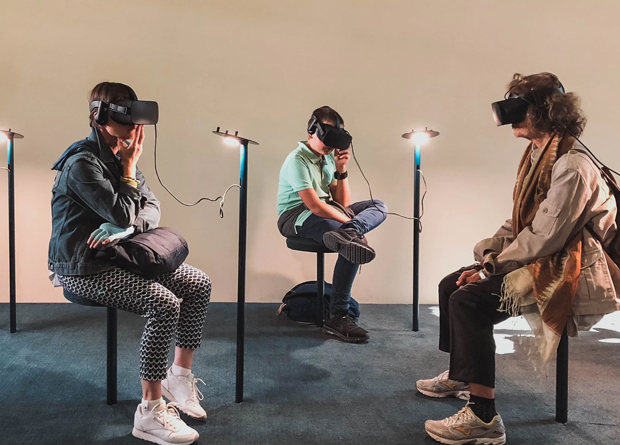The architecture, engineering, and construction (AEC) industry is in an exciting era. An era where design professionals do not have to spend as much time manufacturing physical prototypes to be able to see how a product could look in real life, thanks to innovations such as virtual reality, augmented reality, and reality capture.
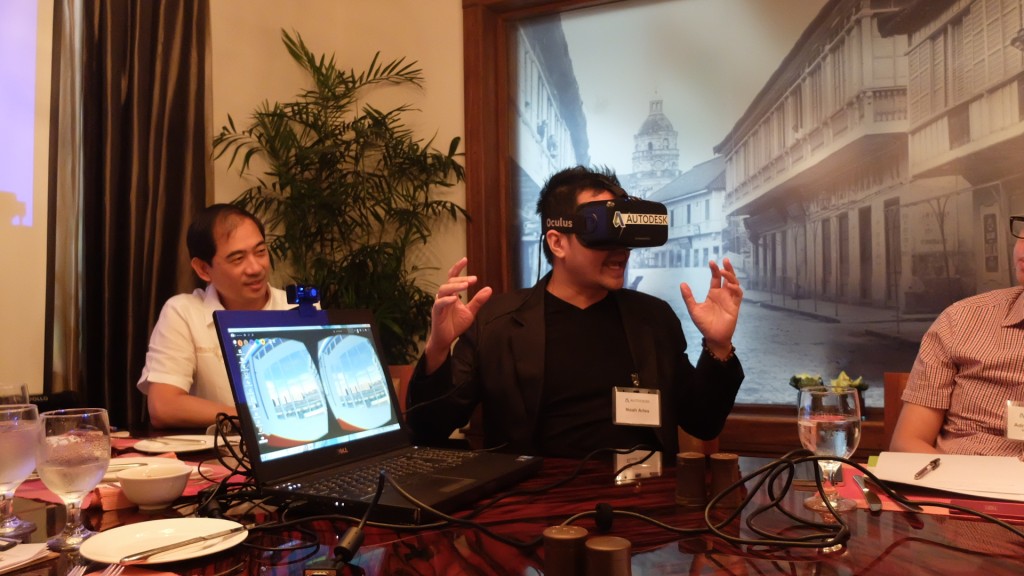
Autodesk technical specialist Noah Arles demonstrates how virtual reality and augmented reality can bring building information to life. PHOTO BY MELBA BERNAD
Earl Guce, Autodesk industry sales manager, said that architects and design professionals, who used to work in silos can now collaborate and interact with the help of technology. “From manual drafting, to CAD, to Building Information Modelling, the AEC industry has gone a long way.”
Guce noted that BIM has paved the way for the entry of virtual reality, augmented reality, and reality capture in the AEC industry. He adds that the visuals and 3D models produced by these technologies have advanced to the point where designers, engineers, contractors, and building owners can become so immersed in the virtual building model that they feel as if they’re actually there.
“Roadworks and infrastructure projects can be completed earlier and with less errors with the help of BIM,” said Guce. “Projects are always delayed because the approval process takes long.”
Demonstrating the power of virtual reality and augmented reality, Arles showed to a small group of journalists how Autodesk software works with Facebook’s Oculus Rift, a virtual reality head-mounted display, to bring building information to life. Some of the applications Arles demonstrated included traffic analysis and infrastructure projects.
“Reality capture allows you to design in context. It captures existing context so when you design, you also design with what is and as is. This prevents errors in the field,” said Arles during the demonstration.
The most recent development with Autodesk’s virtual reality technologies is the company’s new partnership with Microsoft. Last year, the two companies announced that Autodesk Fusion 360 — software that lets users design, test, and ultimately manufacture physical objects — will connect with Microsoft’s HoloLens headset.
The collaboration could make it possible for designers working in Fusion and wearing one of Microsoft’s augmented reality headsets to work together on digital models in the physical world.
Early stage
However, while BIM has the potential to boost the productivity of the AEC industry and contribute to economic growth, it is still in its early stage of adoption in the Philippines.
“Standards have to be followed for the industry to move to BIM,” said Guce. Some of the countries in Asia that have fully embraced BIM are Singapore, Malaysia, South Korea and Japan because their governments have mandated their use, according to Guce.
Education is also important for BIM to move forward, added Arles, noting that Autodesk has partnered with some schools such as the University of Santo Tomas to equip future architects with BIM knowledge.
“As technology continues to evolve, the requirements in our design process continues to grow as well,” highlights Arles. “Autodesk is dedicated to developing new platforms and harnessing the latest technologies that will boost the competitiveness of AEC professionals in the Philippines, and empower them to effectively compete regionally and globally.”




















































































